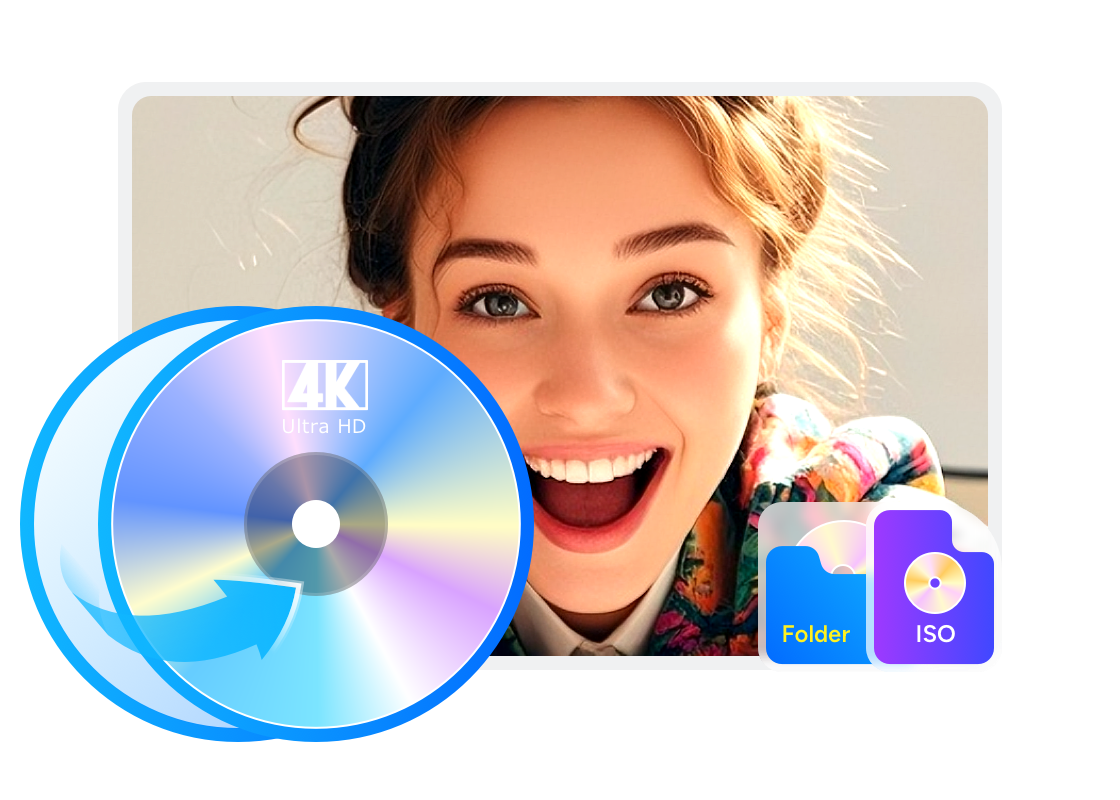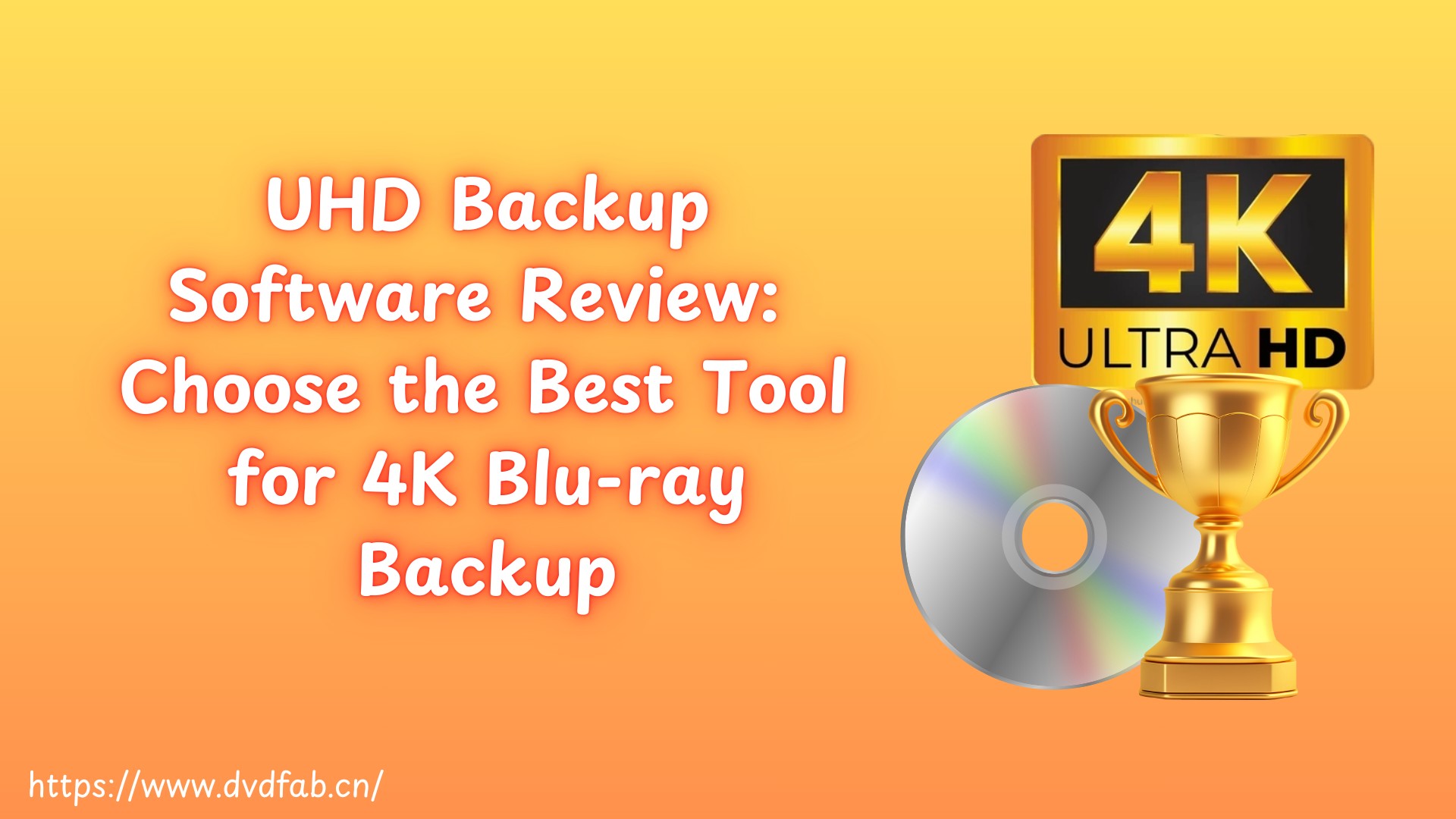UHD vs HD: Unlocking the Potential of High-Resolution Content
Summary: This article shows you the relations and differences between HD and UHD, and recommend you some UHD resolutions for you to copy, rip and playback 4K Ultra HD Blu-ray in an easy way.
If you've shopped for a new TV lately, you've probably seen labels like HD, Full HD, UHD, and 4K scattered everywhere, often on screens that look almost identical at first glance. It's easy to wonder whether UHD is really sharper than HD, or if the upgrade is only noticeable when you sit close or use a bigger screen.
This guide breaks down UHD vs HD in plain language: what each term actually means, when the difference is obvious, and how things like color range, HDR, and screen size change what you see. If you're also dealing with 4K Ultra HD Blu-ray discs at home, we'll walk through practical ways to copy, rip, and play them without losing quality, so you can decide whether UHD is worth it for your setup.

Introduction to HD and UHD
If you just want the essentials, the table below distills the practical differences between HD (1080p) and UHD (4K), like resolution, color depth, HDR support, and typical streaming bandwidth, so you can quickly judge whether a 4K upgrade will be noticeable in your setup.
HD vs UHD: Quick Comparison
| Item | HD (1080p) | UHD (4K) |
| Pixels | 1920×1080 (~2.07 million) | 3840×2160 (~8.29 million) |
| Typical bit depth | 8-bit | 10-bit (depends on content & device) |
| Color gamut | BT.709 | Wider gamut (often carried in a BT.2020 container) |
| HDR | Optional | Most 4K TVs support HDR, but content–device–display must all match |
| Typical streaming bandwidth* | 5–8 Mbps | 15–25 Mbps |
HD (High Definition)
High Definition, or short for HD, refers to videos that have more than 720 horizontal lines. The minimum resolution of a HD video is 1280×720 (horizontal×vertical), hence "720p". It includes totally 921,600 pixels. There is also a term called Full HD, which features a resolution of 1,920 x 1,080, and also is known as 1080p. In recent years, it has become the industry standard, and many television broadcasts, movies and video games are made in 1080p high definition. Common HD video comes with a 16:9 aspect ratio.
UHD (Ultra High Definition)
UHD, the acronym of Ultra High Definition, is the next upgrade of HD. Some people call UHD as 4K, and though 4K and UHD are different technically, these two words can be used interchangeably. You can go to 4K vs. UHD to learn the detailed differences. 4K UHD is made up of 3,840 horizontal lines and 2,160 vertical lines, namely 8,294,400 pixels, which is four times as many as that in a Full HD 1080p video.
UHD vs. HD: Difference and Comparison
The clearest difference between HD and UHD is resolution. HD tops out at 1080p (about 2 million pixels), while UHD jumps to 2160p (about 8 million pixels). With four times the pixel count, UHD can show finer textures, such as small text, fabric patterns, and hair strands, that often look soft or slightly blurred in HD.
You'll notice the extra detail most when you sit reasonably close to the TV or use a screen 55 inches or bigger. On smaller TVs, the gap between HD and UHD becomes harder to see.
Many UHD films and television programs support HDR and a broader color gamut in addition to resolution. Although they don't alter resolution, they can improve color accuracy, shadows, and highlights. When HDR is done well, scenes look closer to how they were shot.
Benefits and Drawbacks of UHD Compared to HD
- More visible detail on larger screens
- Better HDR and color performance on supported content
- More 4K content available on major streaming platforms
- Higher cost compared to HD displays
- Not all viewing setups reveal the difference
- Higher bandwidth needs for 4K streaming
UHD vs. 4K: Differences and Use Cases
When exploring the world of high-definition video, you may often encounter the terms "UHD" and "4K." While they are frequently used interchangeably, there are key differences between them regarding pixel resolution and their intended use.
DCI 4K vs. Consumer 4K/UHD:
- DCI 4K (4096×2160): It's a little wider than what we see on home TVs. The extra width matches the wider aspect ratios used in theaters, which is why movie masters are often created in DCI 4K before being adapted for home release.
- Consumer 4K/UHD (3840×2160): It is the resolution used by consumer UHD TVs. It fits the standard 16:9 aspect ratio, so it lines up exactly with what modern TVs and most streaming platforms expect.
Use Cases:
- DCI 4K is best suited for commercial cinema production and professional displays that can accommodate its wider aspect ratio.
- Consumer 4K/UHD is tailored for home televisions, streaming platforms, and other media requiring a more traditional 16:9 aspect ratio, offering a seamless viewing experience with Ultra High Definition clarity.
💡Related reading: UHD vs HDR
Ultra HD Solutions
If you are a 4K UHD lover, you may have collected a batch of 4K Ultra HD Blu-rays or videos. So, have you thought of copying or ripping these 4K Ultra HD Blu-rays for backup? Do you want to find a software player that can playback your 4K UHD Blu-rays and videos smoothly with HDR 10 supported? Here we will recommend you the best UHD copy and ripper tool and player.
DVDFab UHD Copy
It is a great copy tool which can preserve the HDR10/Dolby Vision image quality of the 4K Ultra HD Blu-ray. With a HDR10/Dolby Vision compatible display, you can enjoy your UHD copy with astonishing video quality.
Usually, due to the large size of 4K Ultra HD movie, the copy process would take about 20 hours, but DVDFab UHD Copy can compress the time to 1 hour only if your computer with the video card that is capable of 4K HEVC 10-bit decoding and encoding.
It is an easy-to-use copy tool, and you only need to choose the copy mode, add the 4K UHD source, and click the "Start" button.
DVDFab UHD Ripper
Looking to convert your 4K Ultra HD Blu-ray movies for convenient viewing on your UHD TV or other devices? DVDFab UHD Ripper is the best Ultra HD Blu-ray ripping tool that can convert any 4K Ultra HD movie to MP4/MKV/M2TS formats.
- Support for Lossless and 4K HEVC 10-bit Video Output
- Preserve the HDR10 effect of your original 4K Ultra HD Blu-ray
- It provides a built-in video editor to make customized and stunning videos
- Reduce conversion time from up to 20 hours to approximately 1 hour
- Make your UHD movies compatible with a variety of devices, including giant-screen UHD TVs
PlayerFab Ultra HD Player
PlayerFab Ultra HD Player is an advanced media player that plays Blu-ray and 4K Blu-ray discs, ISO files, and folders with menus and HDR10. It is the ideal option for both tech enthusiasts and filmmakers because it blends state-of-the-art technology with intuitive functionality.
- Enjoy vivid visuals with full HDR10 and Dolby Vision support
- Intuitive navigation menus for Ultra HD Blu-rays, Blu-rays, and DVDs
- Play a wide range of video and audio formats, including MKV, MP4, AVI, FLAC, and more
- Experience lossless audio with support for DTS-HD Master Audio, and TrueHD formats
- Leverage GPU acceleration to ensure lag-free playback, even for the demanding Ultra HD content
FAQs
4K increases image clarity with a resolution of 3840×2160 pixels, offering more detail. HDR (High Dynamic Range), on the other hand, enhances contrast and color range, resulting in more vibrant and realistic images. HDR includes standards like HDR10, Dolby Vision, and HLG, each improving visual quality. Ensuring device compatibility with these HDR formats will maximize your viewing experience by taking full advantage of improved brightness and color depth.
How close should I sit to notice the difference with 4K/UHD?
As a rough guide, you'll notice 4K detail more at ~1.2–2.0 m for 55" and ~1.4–2.3 m for 65". Farther away, differences vs. 1080p become harder to see (vision and content quality matter).
Is it legal to back up UHD Blu-rays with copy protection?
It depends on your region's laws. Generally, only make personal backups of media you legally own where permitted, and do not share. Do not attempt or discuss circumventing DRM/technical protection.
Conclusion
For most people, the jump from HD to UHD is mainly about seeing more detail and getting better color when the screen size and viewing distance make it noticeable. If you're thinking about upgrading your setup or already collecting 4K Ultra HD Blu-ray discs, it helps to know what UHD can and can't improve in everyday viewing.
If you want to back up or reorganize your UHD movies, DVDFab UHD Copy and DVDFab UHD Ripper offer practical ways to save discs to your drive or convert them into smaller, more flexible formats while keeping HDR and high-bitrate audio intact.



